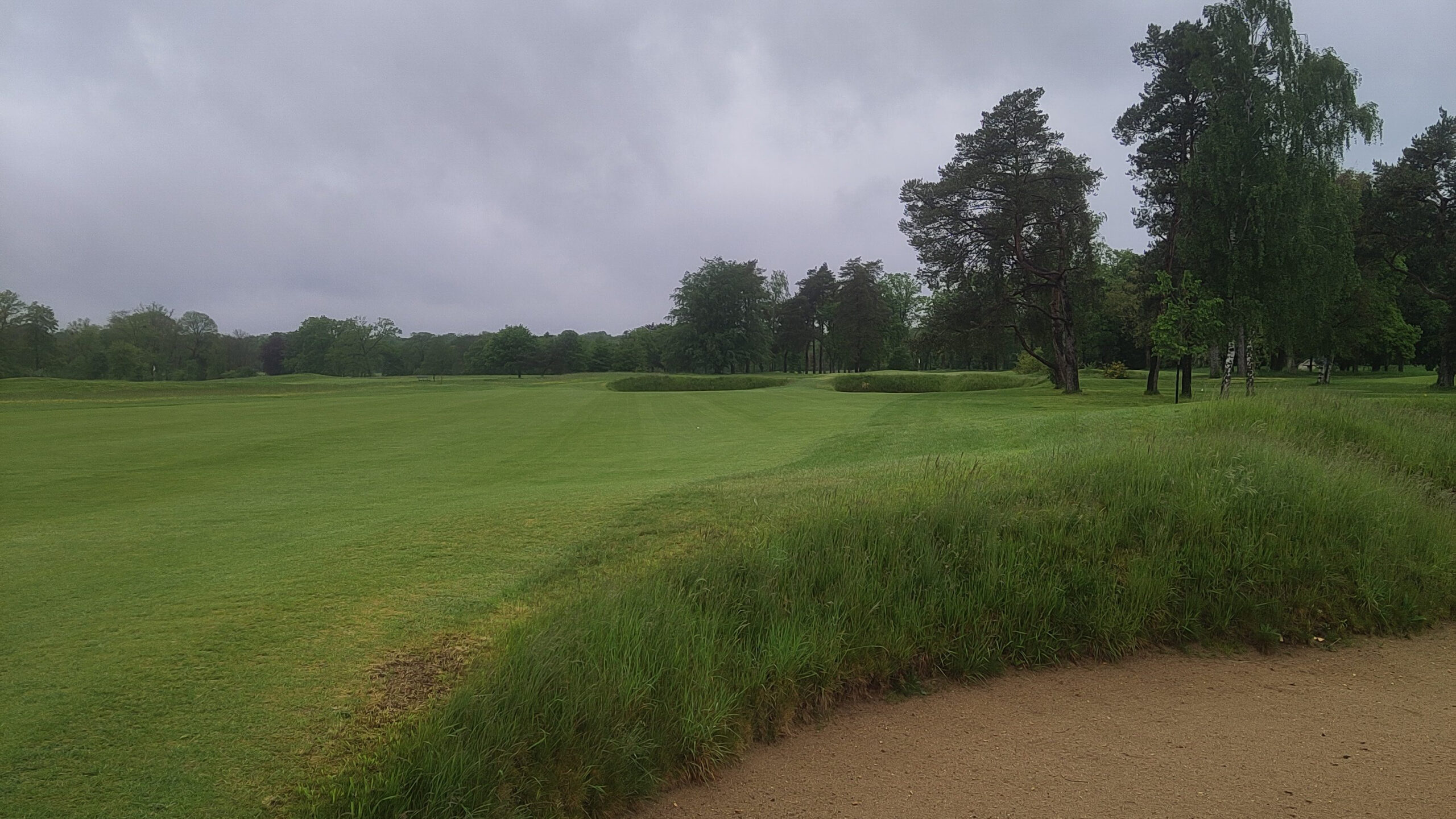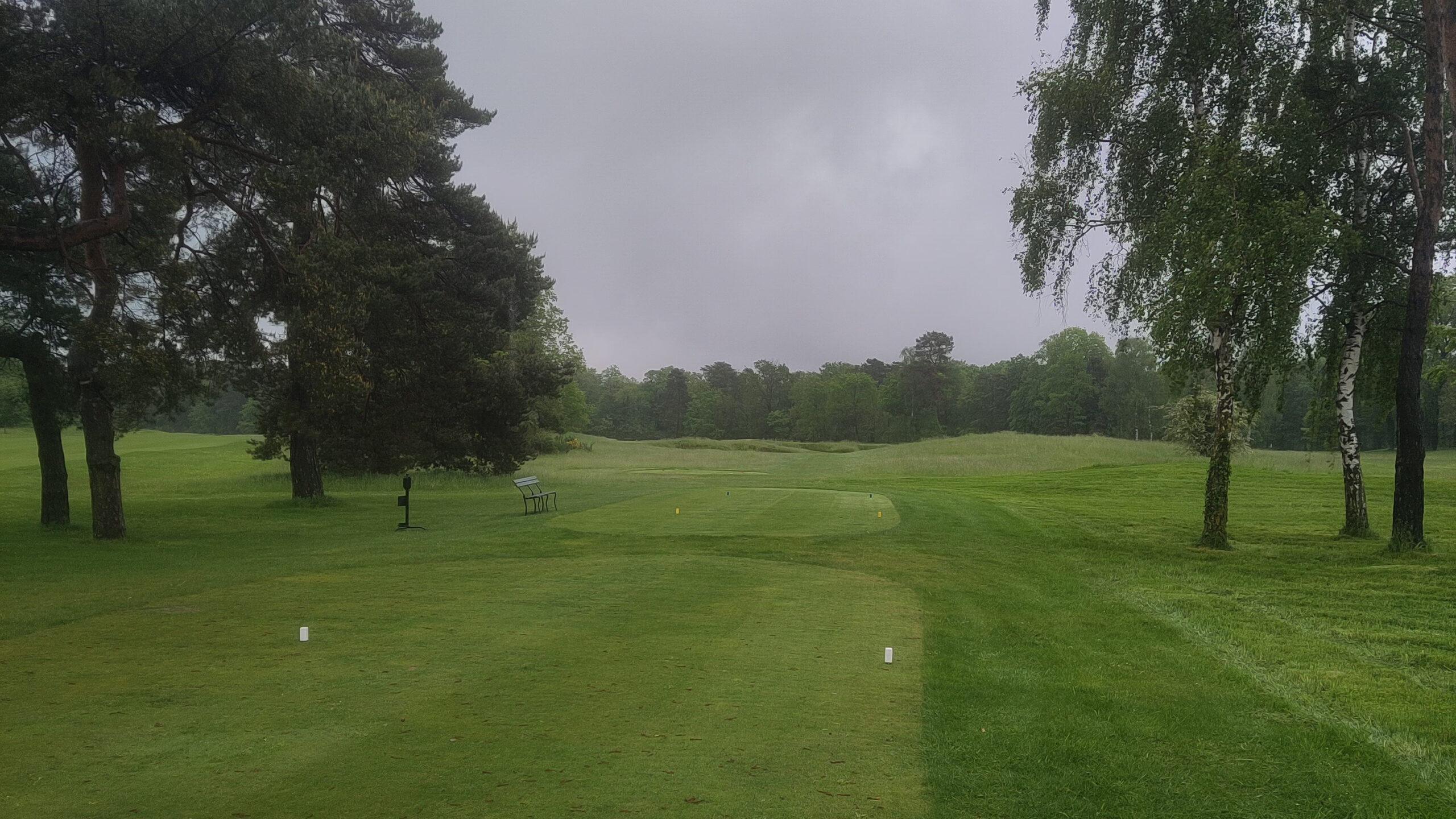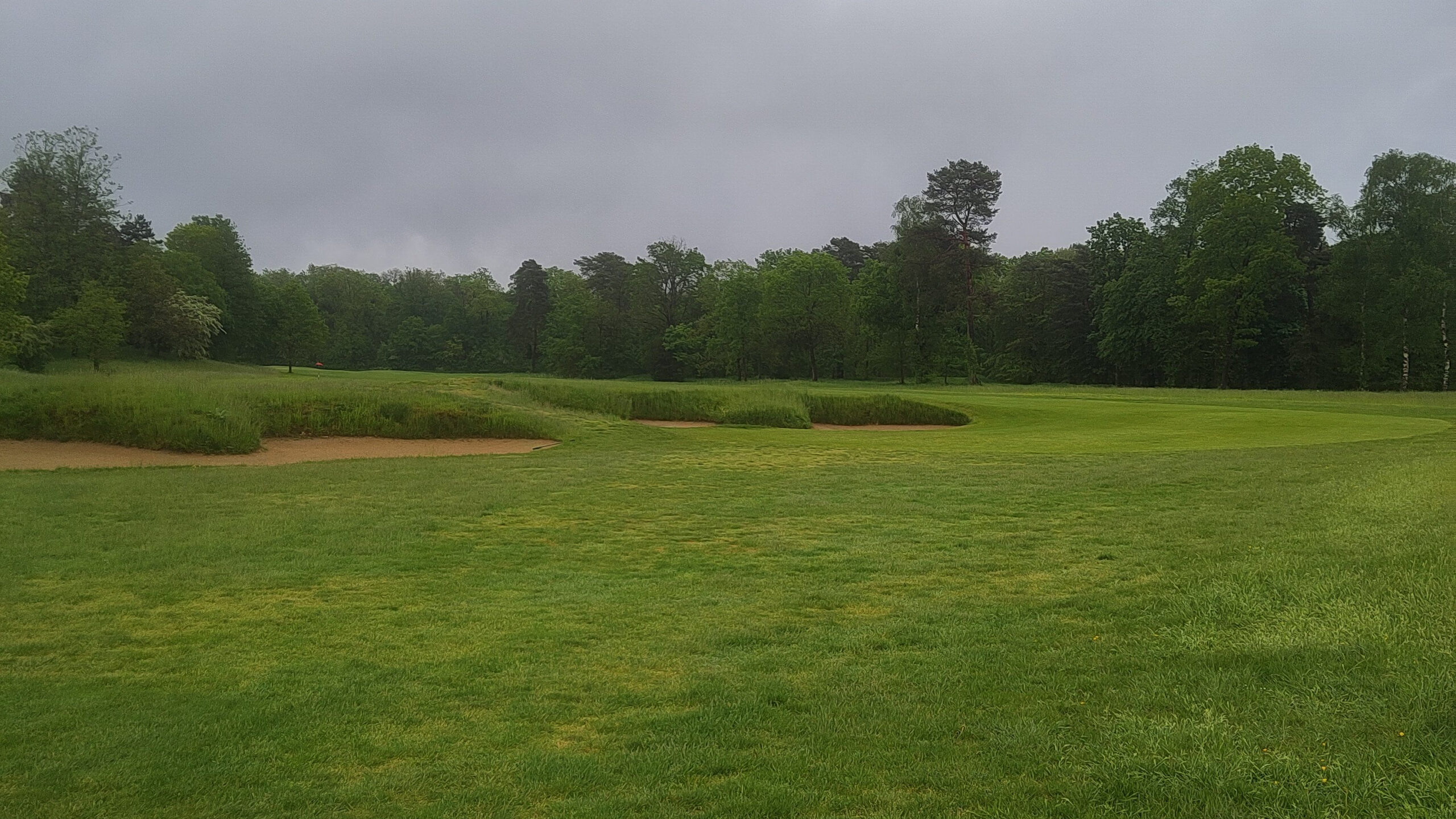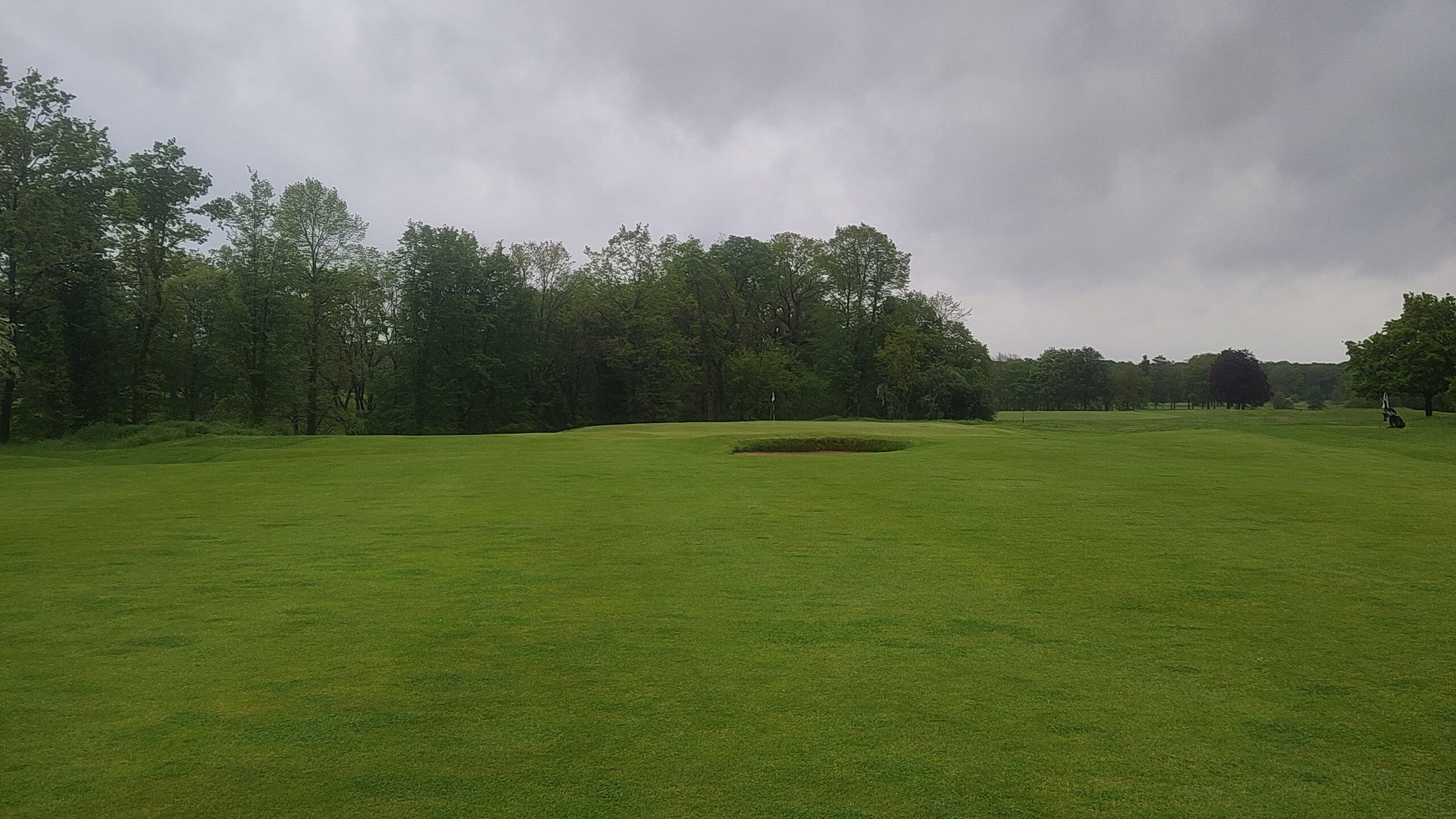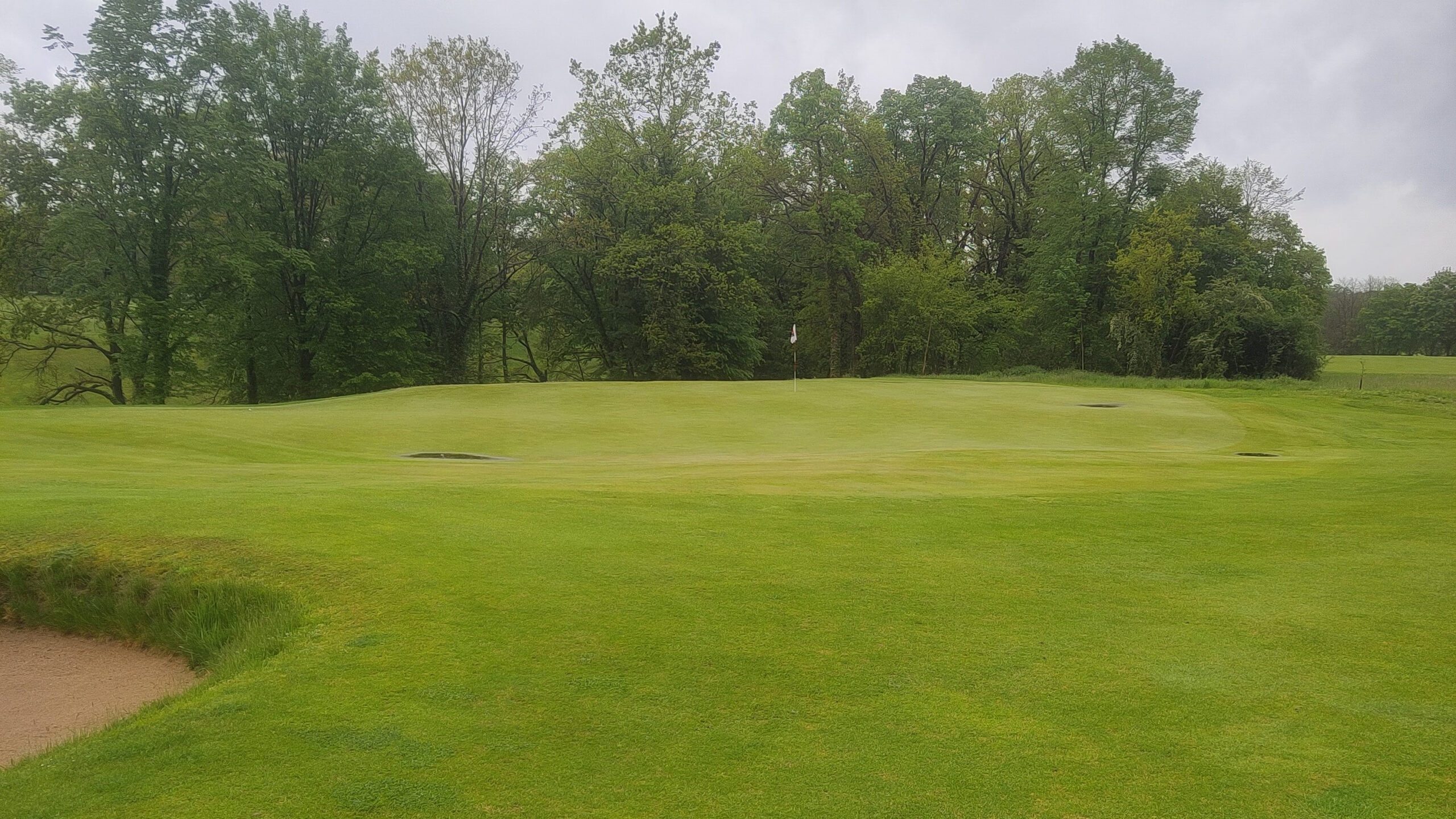Along with Morfontaine, Chantilly is one of the aristocrats of French golf. Although the club was originally founded in 1907 by Baron Edouard De Rothschild, the Tom Simpson golf course we now play, named the Vineuil, opened in 1920. It has since hosted the French Open ten times – including two won by Nick Faldo -, a litany of other professional events, and is the yearly host of the French Amateur Championship.
The club cherishes its esteemed history and mementoes to it are proudly displayed all throughout their elegant and tasteful, yet subdued and comfortable clubhouse. In truth, I have visited few clubs, if any, that I would rather join. It’s a bit cliched, I know, but Chantilly screams golf: pure, unadulterated golf.

The journey to the club, which is located about 30 miles north of Paris, takes one through the bucolic countryside surrounding the City of Light, past a hippodrome, near a moat-surrounded gray-marble castle from the sixteenth century, and between a number of horse-stables, the primary occupation in this part of L’Ile de France. There is a real “sense of place” to Chantilly, one which begins well before you drive down the pine-tree-enveloped entrance-lane that is bordered closely by the large and well-groomed practice tee, replete with a state-of-the-art Titleist fitting center. From what I can gather, practice facilities of this magnitude and quality are a rarity among France’s historic golf courses. Yet it undoubtedly adds to the aura of Chantilly being a true “player’s club” (sorry for using another cliché).
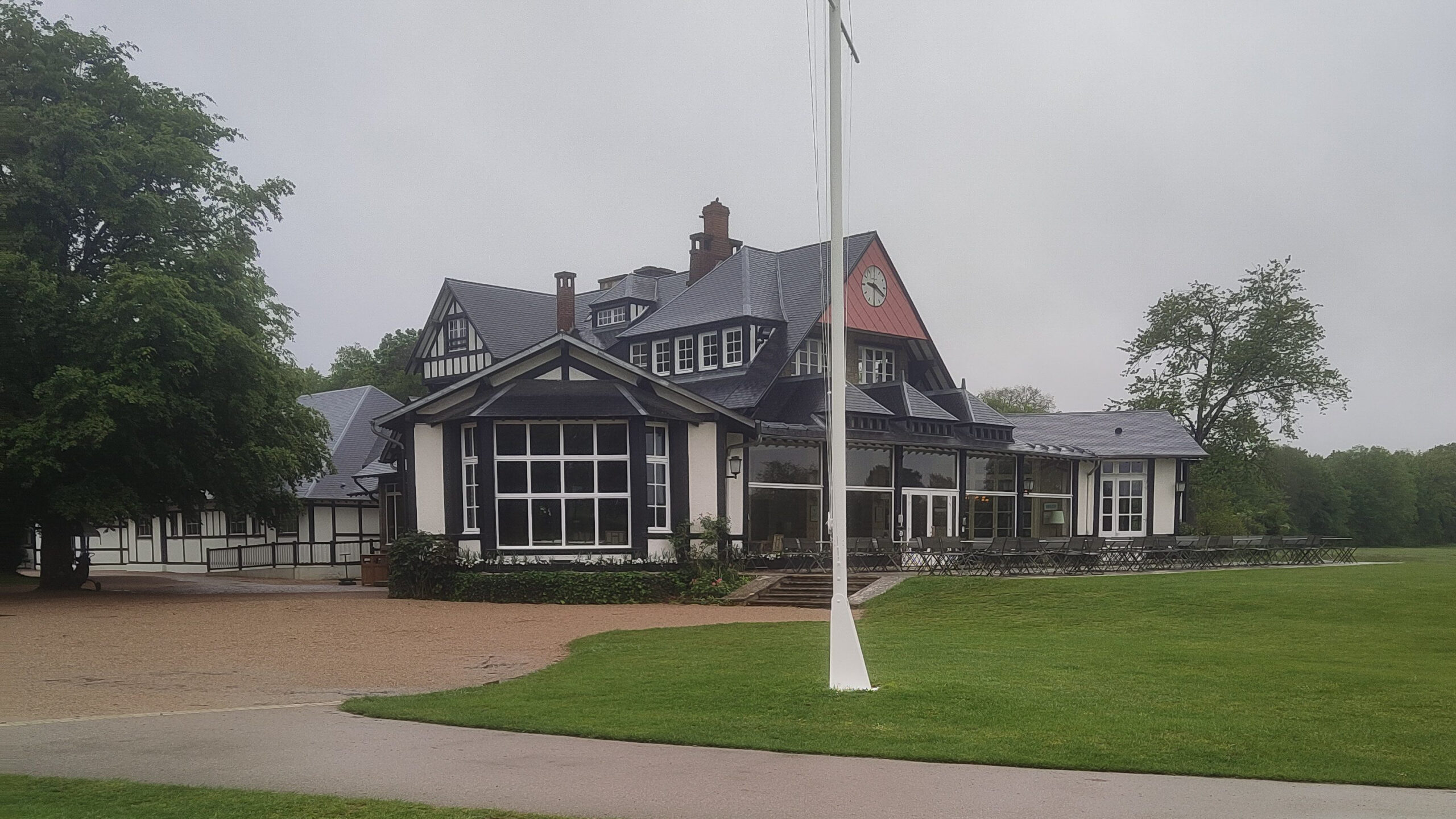
Chantilly’s clubhouse, which was empty on such a gloomy and wet spring morning
As I wrote earlier, the operation and footprint of the club are minimalistic, with a small, unpaved parking lot, a detached single-story building in which the pro-shop and bag-storage room are located, and only a handful employees on hand to take your payment, sell you a sleeve of balls or a sweater, and, most importantly, serve you a café-au-lait before teeing off. This is how I prefer it: no Eagle’s Nest/Trump National army of attendants and range stewards and Maître’Ds and towel boys, etc, etc, asking you if you need anything every two minutes, no concierge service or car-wash in the parking lot. We are here to play golf, quickly, passionately, and appealingly, Chantilly announces.
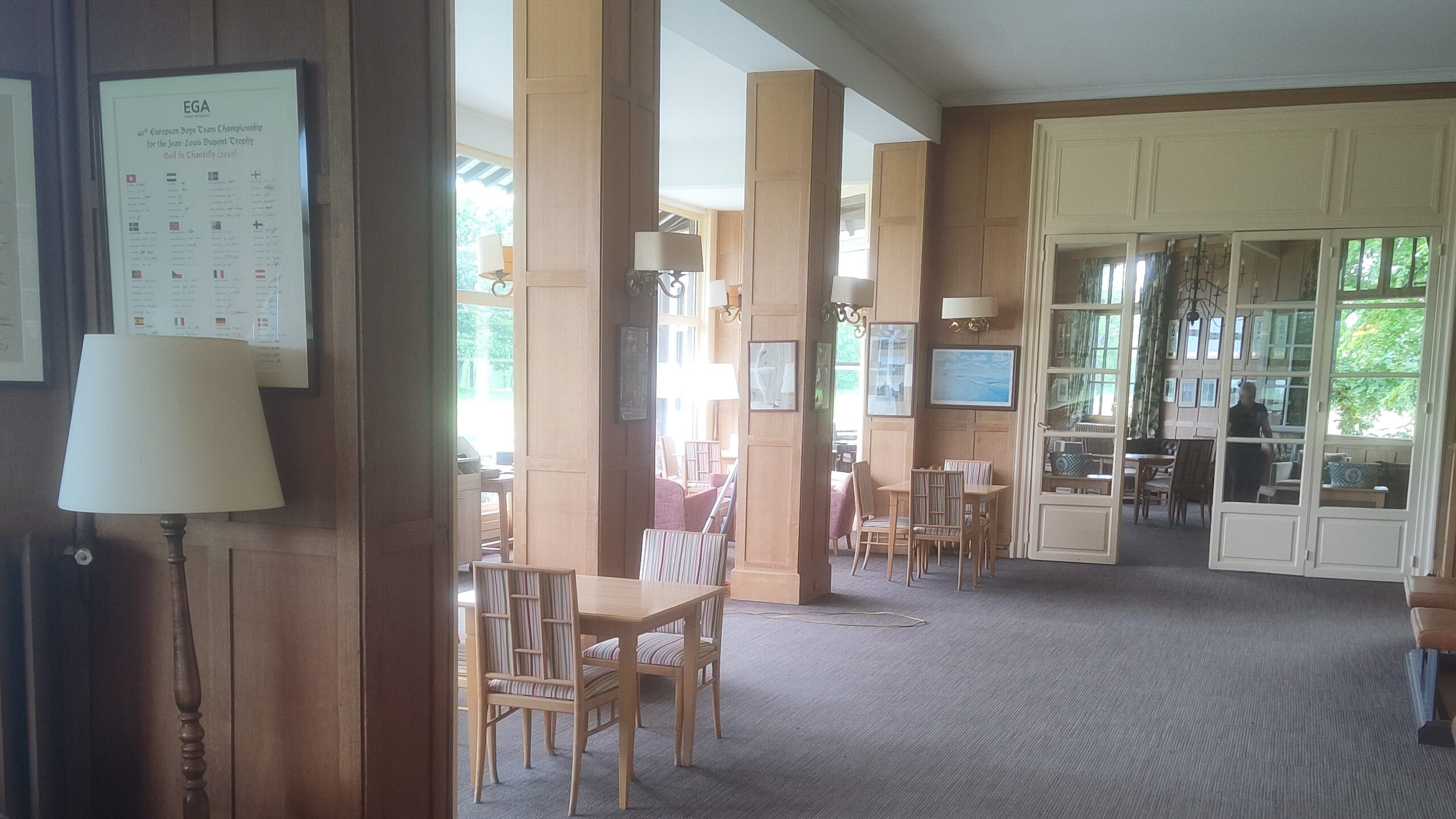
The main dining room (using one’s phone is frowned-upon in the clubhouse, so I snapped this one quickly)
This was my first foray into continental European golf, and as with anything novel, I was slightly tentative and unsure of what to expect. After-all, the French elite, the segment of society which populates the country’s better golfing clubs, can be slightly gruff and standoff-ish—was I venturing upon ground where I wasn’t welcome, an intruder.

The old-world locker rooms, unchanged changed since Arnaud Massy frequented it
Moreover, It’s not as if France is exactly a well-known and well-documented golf destination. And I had never played a Tom Simpson golf course before.
Well let me assure you that Chantilly is absolutely fantastic and first-rate in all aspects: from its conditioning, to its presentation, to its preservation, to its shot-values, to its atmosphere. Simpson’s work (as at Fontainebleau and Morfontaine, as well) is a true masterclass in flat-land architecture, the mark of a truly great architect, in my mind. It’s one thing to transform a piece of sandy coastal dunesland into a great golf course, but to transform, what essentially was, a rather nondescript paddock (with merely one deep gulley running through it) is a completely other skill.
Yet, Chantilly is undoubtedly for the aficionados, those with a palate and an eye geared towards subtlety, those who don’t need to be overindulged by superficial and architectural histrionics. In that regard, the golf course is quite similar to Mount Bruno, or Redtail, or even Piping Rock in parts. Judging it to Canadian standards, whereas I would probably have Chantilly neck and neck with Toronto Golf Club for top spot in our country, another prominent publication that ranks courses here would probably have it somewhere in the mid 20s or 30s, as they do with Mount Bruno or Calgary, for example. But I digress and I should get back to “entertaining my audience” rather than simply “aggrieving the industry.”
In my mind, and in accordance with PlanetGolf, Chantilly is a sure-fire world top 100 golf course.
For every day member play, the Vineuil course now consists of 15 holes by Simpson and 3 from Donald Steel, who designed most of the club’s second course, the Longeres.
Before we start, as should become obvious soon, the skies opened up at about the exact moment when I block-cut my opening tee-ball into the right fescue, and, as a result, there were times throughout the morning when I simply couldn’t take a picture. Moreover, I hate taking pictures when I am playing, which strongly contributes to my lack of course tours on this site.
Above all, a good opening hole should make you want to play the seventeen that follow it, and the 1st at Chantilly certainly accomplishes this task. Set some hundred yards from the back porch of the clubhouse, the first fairway is set beyond the main ravine that bisects the property, and it is framed by three flanking bunkers. Even on such a rainy day, the turf was crisp and firm, at least until pools started forming on the greens.

The wonderful opener
As epitomized by Donald Ross at Pinehurst #2, one sure-fire way to make up for what a property may lack in natural interest is to turn up the green complexes to 11, and Simpson certainly did so here. Pronounced rolls, substantial humps, and run-offs around the periphery characterize nearly all of the green surfaces at Chantilly, which as a set is solidly among the better few I’ve played so far. And the 1st, picture below, is one of the standouts.
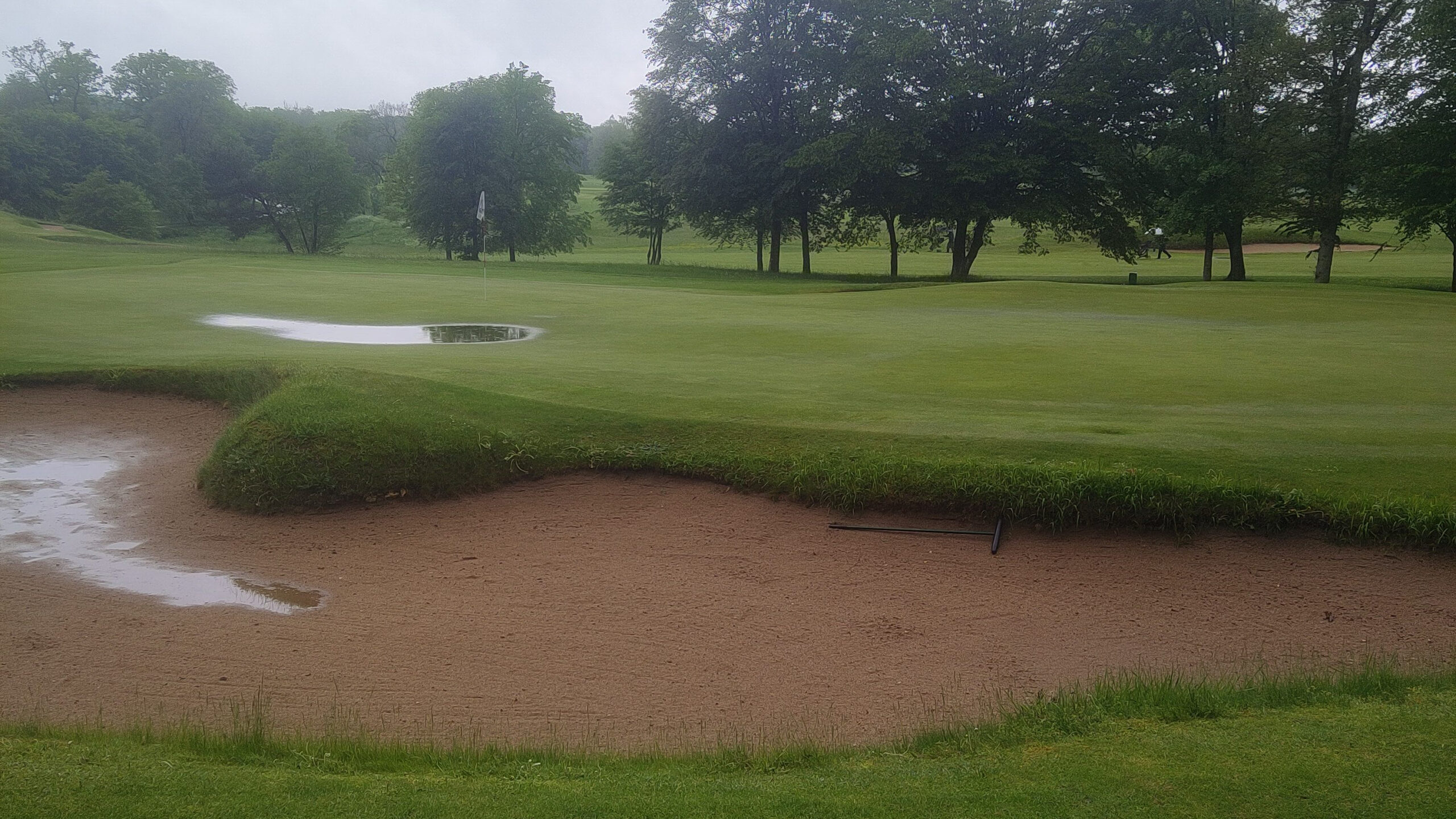
The wicked green complex at the 1st, no easy handshake to start
The 2nd, a mid length par 4, runs in the opposite direction to the 1st and features an attractive green site perched on a shelf. Once again, Simpson, it seems, merely draped the fairway over the gently tumbling land and cut a bunker exactly where you’d want to bail out, away from the trees to the left – simple, precise, yet effective. A reminder that great golf architecture need not be that complicated after all.

The 3rd is a pretty standard, though challenging, par 3, playing a tad downhill to a tightly guarded green featuring some wicked internal contouring, a common theme of the day.

A good long-iron is required to find the surface, here
The 4th and 5th, two mid length par 4s, traverse a rather nondescript portion of the property as the routing transitions to the flatter area away from the main ravine. Both holes feature good green complexes that are partially obscured from the fairway, a common trope that Simpson employs to add visual interest and deception where the land didn’t provide it, itself.
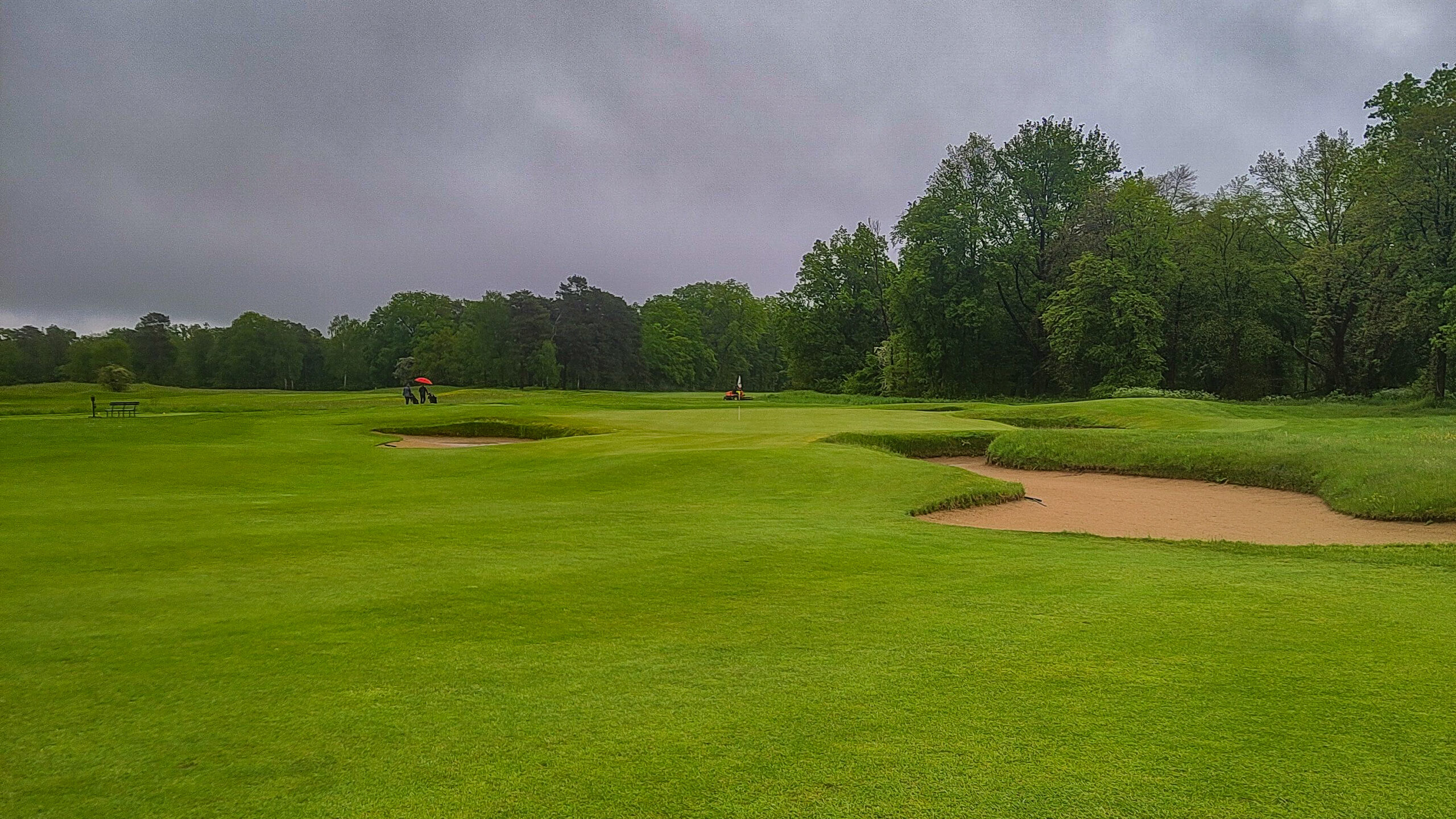
The elegant green complex at the 4th
The 6th, a long and slightly perplexing par 3 upon first play, begins a great run of three holes to culminate the outward nine. From the tee, it is difficult to know exactly what you’re dealing with, for all that is visible above the slight crest in the land are the flagstick and the peak of the bunker face. At 210 yards, it takes a strong commitment to one’s target-line to execute a good swing.
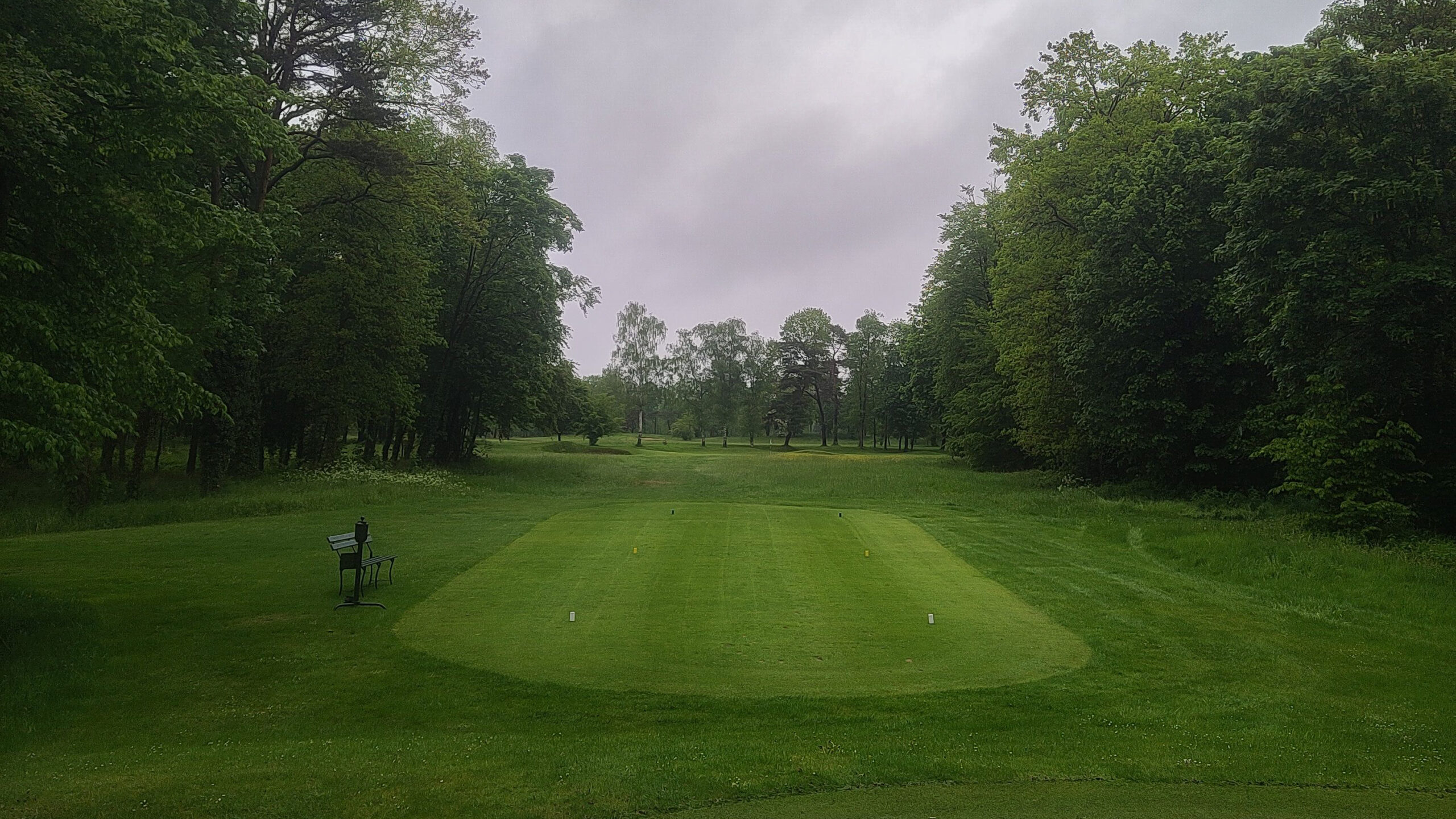
From the tee
Upon approaching the green, however, the generous and quasi-punchbowl pad reveals itself, and you realize that the fronting bunker is cut well short of it.
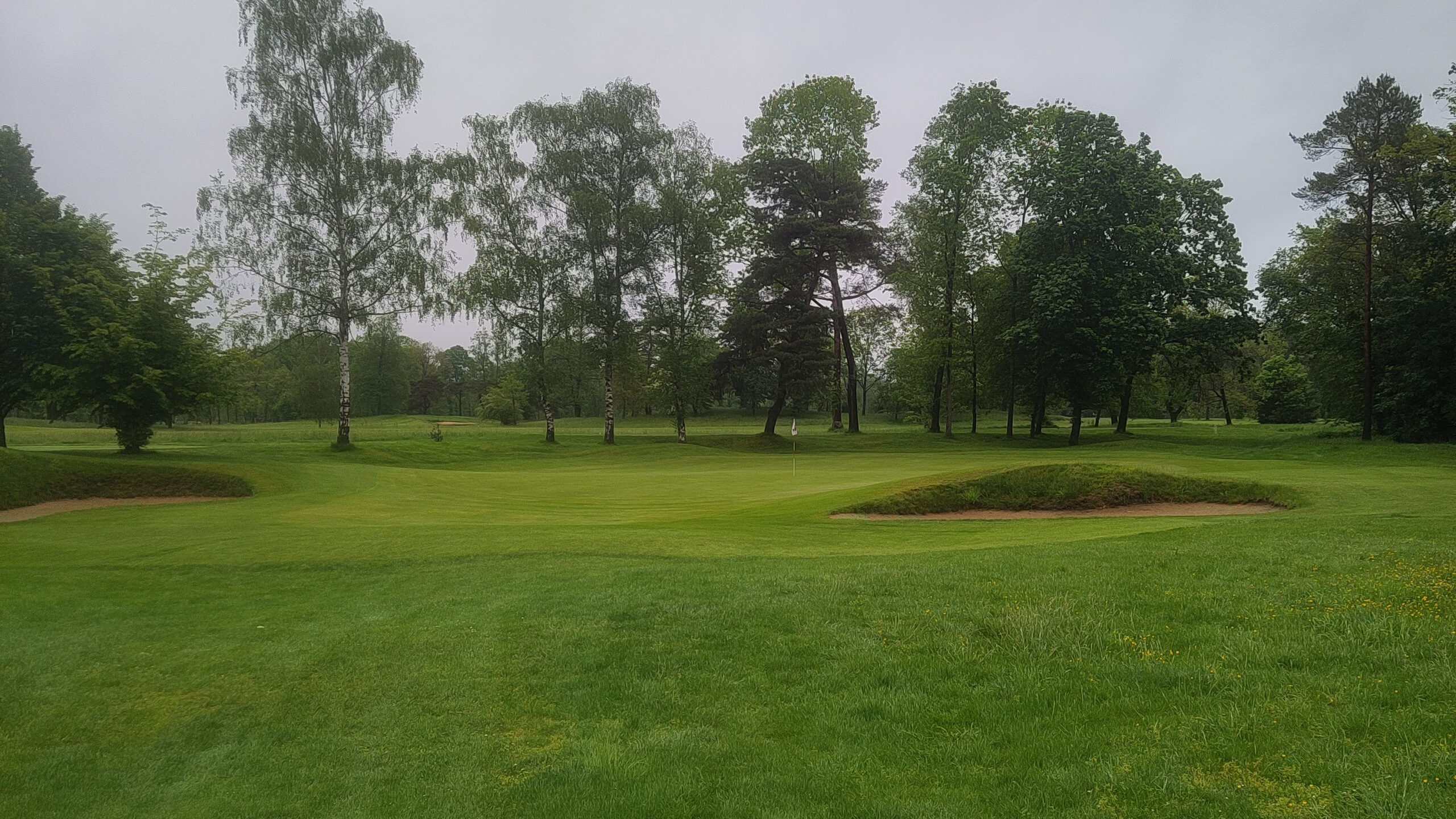
From about 60 yards out
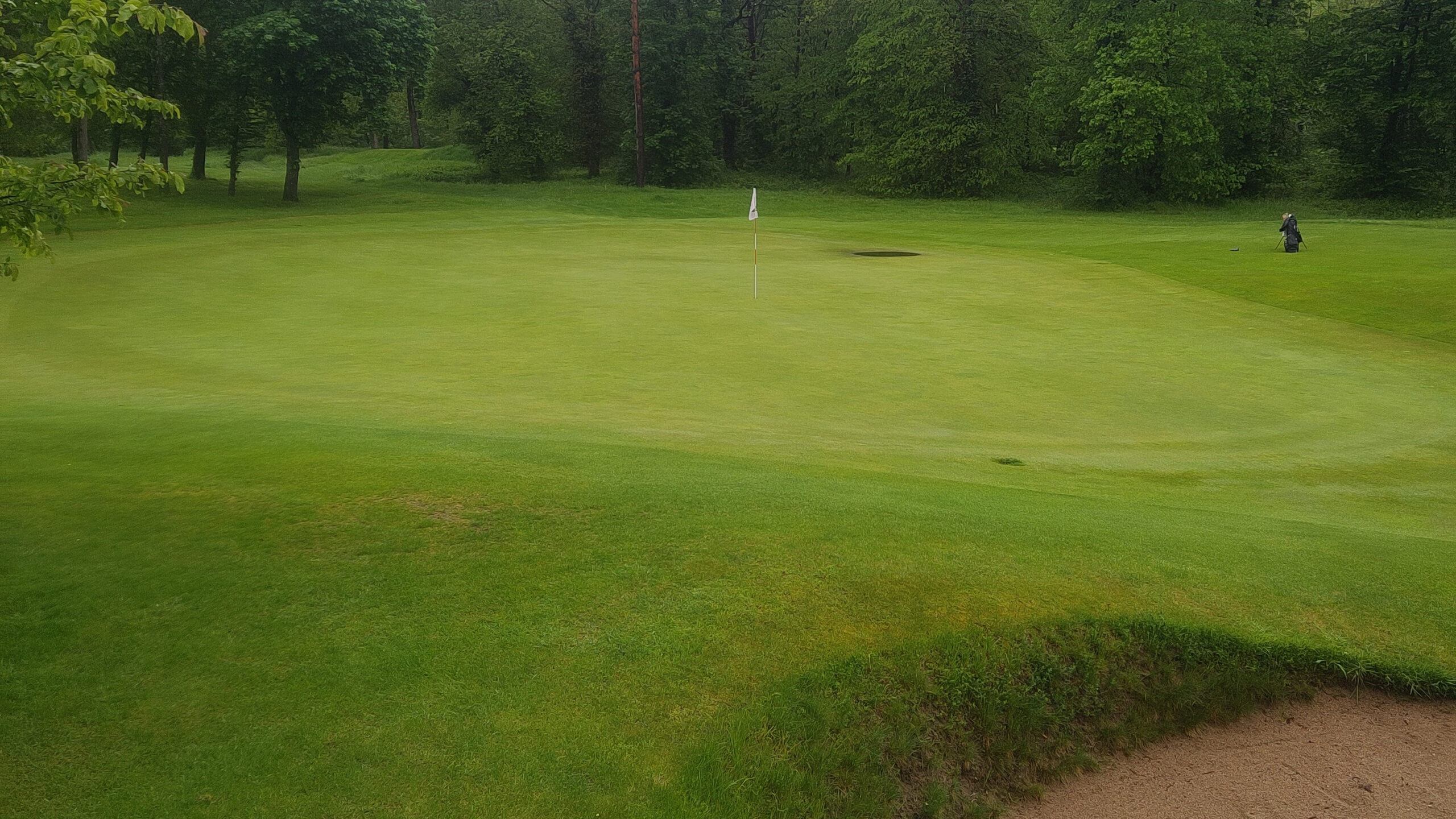
From the side
The 7th is a truly world class par 4, featuring a left-to-right angled fairway, with an expanse of fescue and two bunkers on the inside over which you must decide how much to cut off.
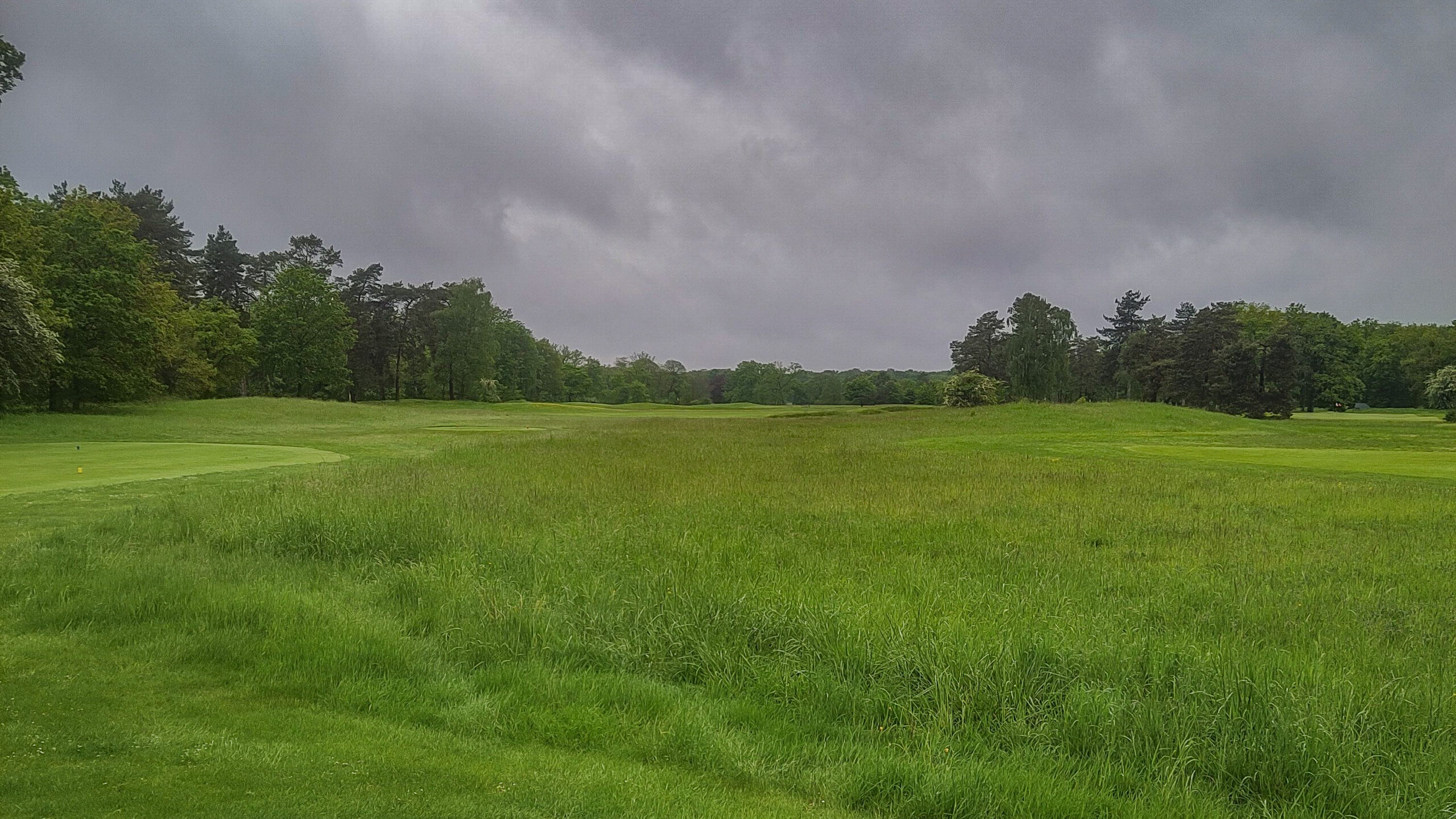
The view from the tee on the long 7th, where the fairway must be found
After that, two cross bunkers, which shouldn’t be in play but nevertheless affect the eye, provide an additional element of discomfiture to the long-iron approach shot into the well-guarded and false-fronted green. This is old-school links golf at its absolute finest.
- The view of the approach
- The green complex, which sits beyond the cross-bunkers
The 8th once again features cross bunkers that shouldn’t come into play but are nevertheless omnipresent. Another false fronted and intensely contoured green must be dealt with, before the Simpson holes make way for the triumvirate of lesser Steel holes.
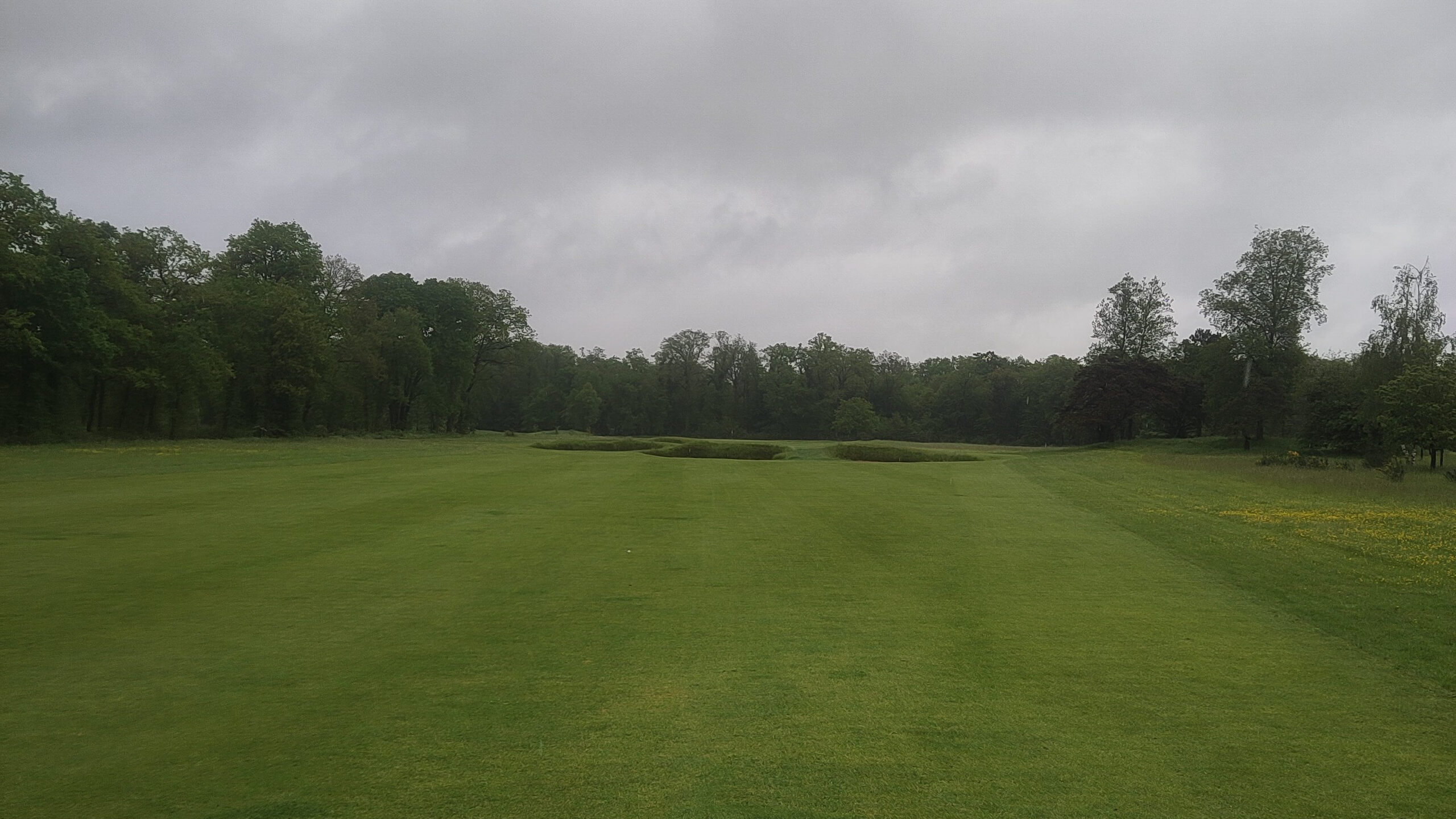
The second shot on 9, after a good tee-shot
At this point, and for the next half-hour or so, the golf course was essentially unplayable, with puddles forming in the low points of the greens, so I was simply focused on trying to survive; however, I would say that, in fairness to Steel who is a good architect in the grand scheme of things, he wasn’t given much to work with in terms of natural interest. Still, when the work of two architects is so closely juxtaposed, as is the case here, the difference in quality between, what I consider to be, a good architect in Steel and one of the all time greats, in Simpson, is made all the more evident. In and of themselves, the three Steel holes are fine (the par 3, 11th, is quite good, in fact) but they undoubtedly stall and hinder the momentum of the golf course – especially when you go see the three Simpson holes that are now a part of the other course for everyday play.
Following the strong albeit somewhat unspectacular 12th, the momentum resumes at the 13th and doesn’t really let up until the end. Here, Simpson once again used visual trickery to put the golfer off balance, as all that is visible from the tee are the top of the bunker faces, which obtrude into the angled fairway. These can and must be flown, but it’s not evident upon first play. Even a good drive leaves a difficult second into the false-fronted green.
- It’s difficult to pick the correct line on right-to-left angled par 4, 13th
- A closer look at the positioning of the bunkers
The 15th returns to the edge of the main ravine. Here, a good tee-ball must be played in order to leave the golfer a navigable second into the sunken and thus obscured green, which is cut above and to the left of the ravine. Once again, the fronting bunker plays with the golfer’s eye, and the generous size of the putting surface is not apparent until you approach it. This is one of the more intense surfaces on the golf course.
- The approach to 15
- The 15th green complex, which sits obscured from the fairway
The 16th appears to be a bit of a nothing tee ball, played with less than driver, but once again you must position yourself carefully. The second shot must carry the ravine to the green on the other bank. A stunning vista across the property reveals itself once you get out to the fairway.

The approach to the difficult 16th, the beginning of the crescendo
Pictures don’t do justice to the dramatic and hundred-foot-plunging 17th, which is sure to bring to mind San Francisco Golf Club’s famed “Duel Hole”. A long iron or fairway wood is required from the tree, and it must be hit accurately to find the surface, which looks to be the size of a dime, way down there.
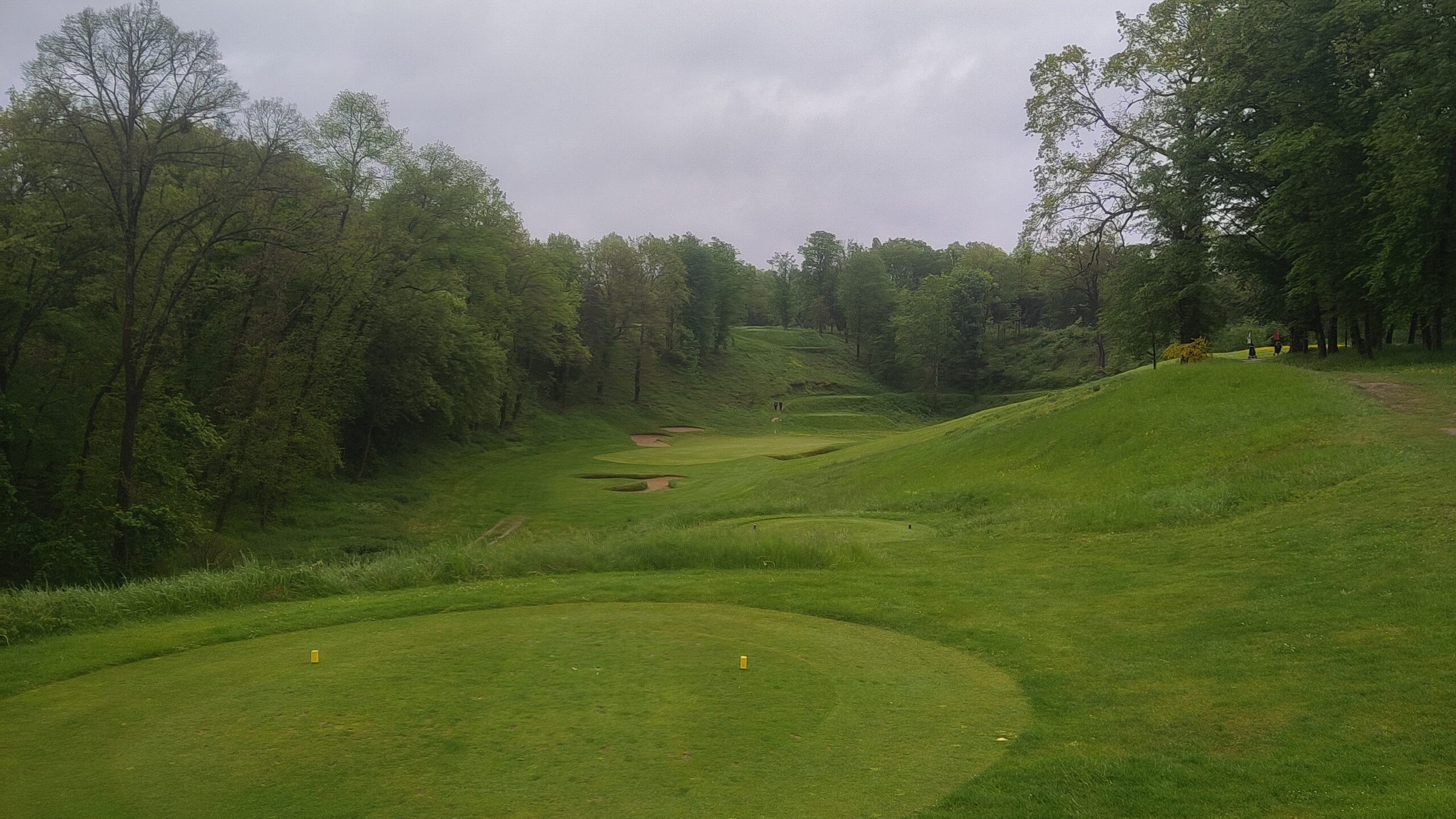
The wonderful drop-shot 17th, with the 18th tee in the background
The 18th plays back across the ravine, which brings the golf course to a dramatic crescendo (although for Championship play, and in its original configuration, this is the 15th, not the 18th). The 18th green sits near the clubhouse, and on sunny days, a full patio of members is sure to raise the tension and blood-pressure slightly.
- The final approach
- The final green complex with the clubhouse looming
I considered going out to play the three other Simpson holes, but my feet were simply too soaked to do so. Give me a break, I was on vacation and wearing mesh Footjoys. Simpson’s par 3, which plays as the 16th for championship play and is visible from the dining room, is stunning, and about exactly what would come to mind when one thinks “heathlands golf.”
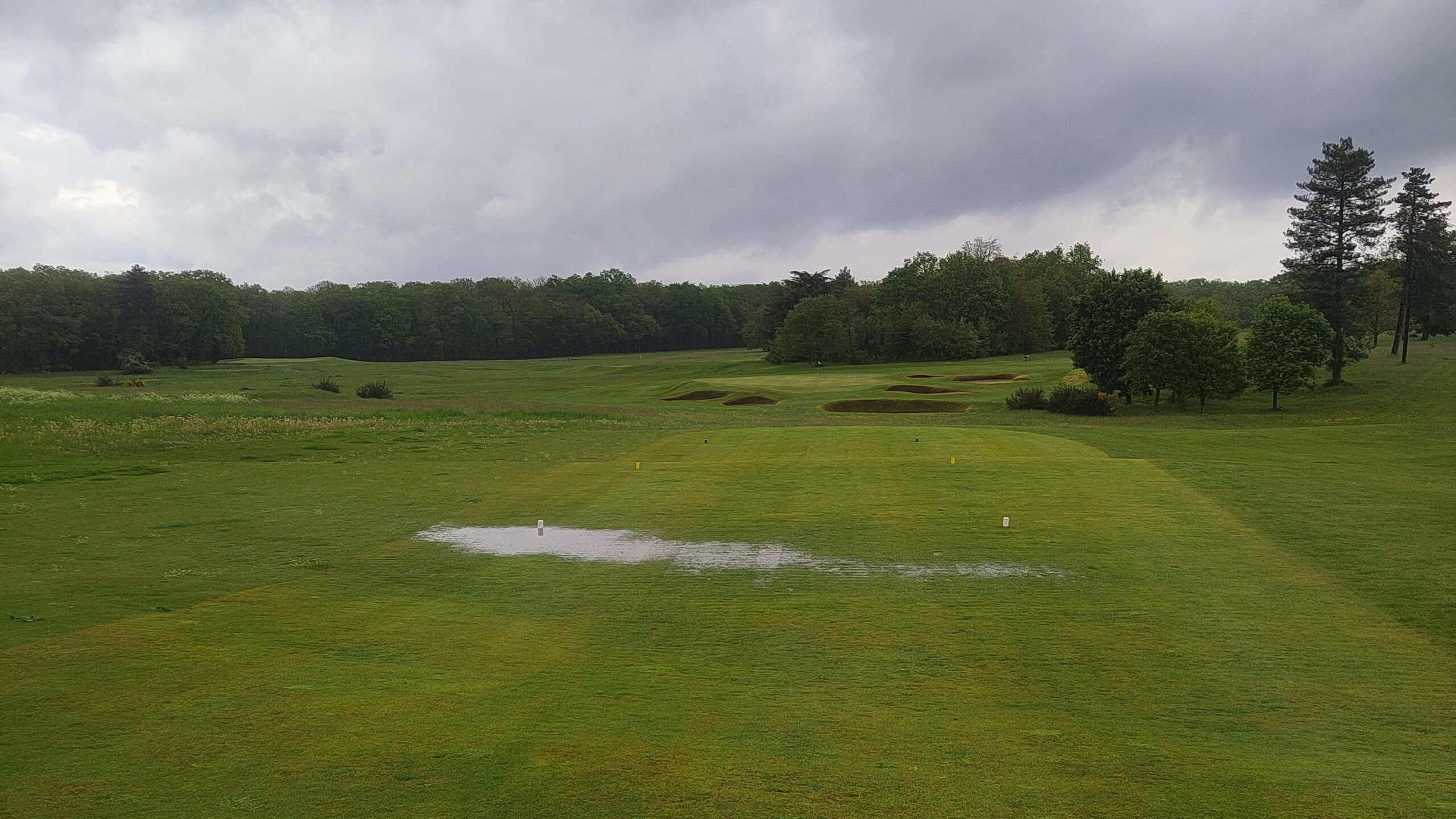
Simpson’s 16th, which is now a part of the Longeres course for member play
All in all, Chantilly is a brilliant place to spend a day, one that was made even better by the fabulous food afterwards. Seeing that I was about the only golfer on property that day, I had wonderful lunch, consisting of red wine of course and some kind of lamb-dish, with the club’s president, Laurent Bailly, who gave me a run-down of the club’s history, its operations, and some of its notable events and figures of yesteryear and today. From this chat, I gather that club pride is a major thing in France, as evidenced by events such as the Trophée Gounouilhou, a year long, interclub showdown played all across the country. He also mentioned that one of his primary mandates, after being elected president in 2015, was to provide a first-class environment for juniors and younger, usually college-aged golfers to hone their game. It seems as if that has been accomplished, for I can only envy those who get to play and practice here on a daily basis. I still think of this round and this day routinely, even despite the weather.



